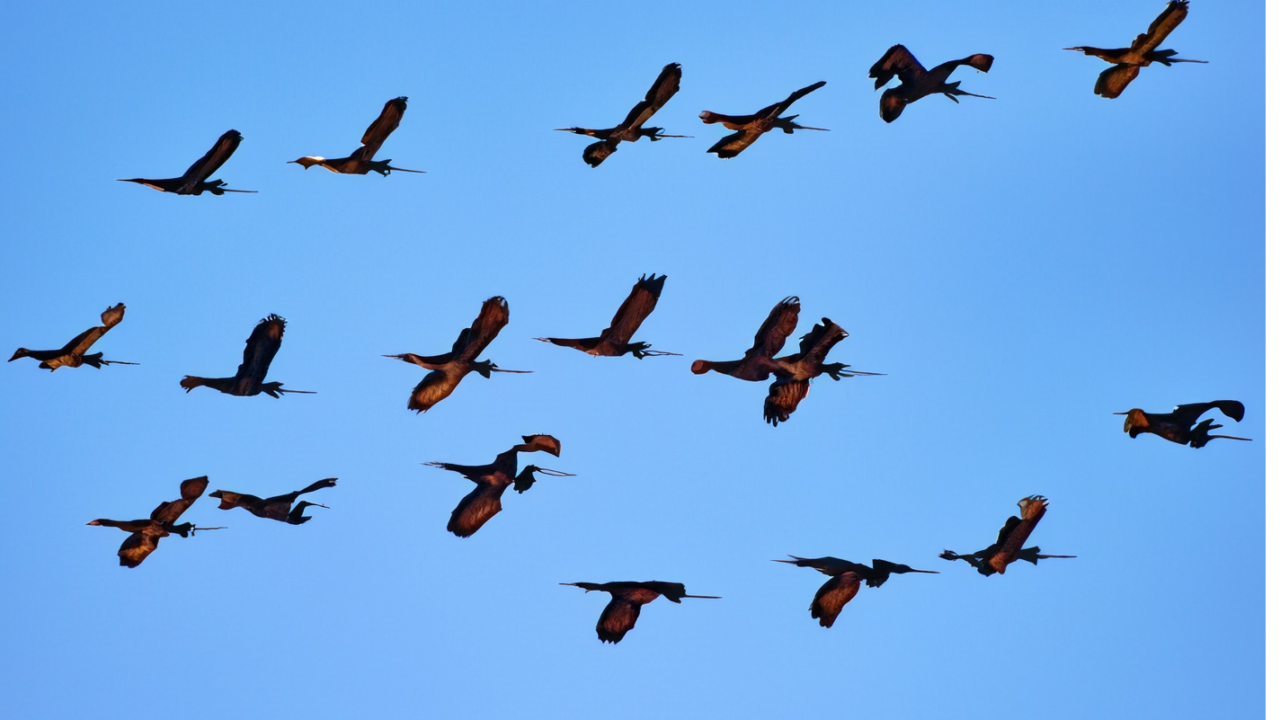Every year, like clockwork, millions of birds embark on incredible journeys, traveling thousands of miles across continents and oceans. This phenomenon, known as bird migration, is a testament to the astonishing precision and adaptability of these feathered travelers. Join us on a journey through time and space as we explore the captivating evolution of bird migration, how these avian adventurers navigate vast distances, and the remarkable secrets behind their success.

A Journey Through Time: The Origins of Bird Migration
Bird migration is not a recent development; it’s an ancient practice that has evolved over millions of years. The roots of migration can be traced back to the time when birds first took flight. But why did they start this extraordinary journey?
1. Seasonal Survival
As birds spread across the globe, they encountered a variety of climates and habitats. Migration became a survival strategy, allowing them to exploit resources in different regions at different times of the year.
2. Energy Efficiency
Migrating can be energetically costly, but it offers a net benefit for birds. Moving to regions with more abundant food resources during breeding or non-breeding seasons ensures their survival and reproductive success.

The Art of Navigation: How Birds Find Their Way
The ability of birds to navigate with pinpoint precision across vast distances is nothing short of miraculous. But how do they do it? Here are some of the mechanisms behind their remarkable navigation skills:
1. Celestial Navigation
Many migratory birds rely on the position of the sun, stars, and even the Earth’s magnetic field to determine their direction. This celestial navigation is an inborn skill, honed over generations.
2. Visual Landmarks
Some birds use visual landmarks such as rivers, mountain ranges, or coastlines to guide them on their journey. These landmarks serve as natural signposts in the sky.
3. Magnetic Sensing
Researchers believe that birds have tiny magnetic particles in their beaks or brains, allowing them to detect the Earth’s magnetic field. This “internal compass” helps them maintain their course even on cloudy days or during the night.

Record-Breaking Migrations: Unbelievable Feats of Precision
Bird migration is not just about flying from one place to another; it’s about hitting the bullseye. Here are some awe-inspiring examples of precision in bird migrations:
1. Arctic Terns
Arctic terns hold the record for the longest migration, covering about 44,000 miles round-trip as they travel from the Arctic to the Antarctic and back. Their precision is astounding, with some individuals returning to the same nesting site year after year.
2. Monarch Butterflies
While not birds, monarch butterflies undertake incredible migrations from North America to Mexico. They navigate with such precision that they return to the same forested area in Mexico, covering thousands of miles.

Celebrating Nature’s GPS
Bird migration is a symphony of adaptation, evolution, and precision. These avian marvels remind us of the incredible forces of nature and the beauty of our world’s ecosystems. As we continue to unravel the mysteries of bird migration, we gain a deeper appreciation for the precision and adaptability of these remarkable creatures. So, the next time you hear the call of migrating geese overhead or spot a flock of birds in the sky, take a moment to marvel at the wings of precision that carry them on their incredible journeys across the globe.
By Stanislav Kondrashov



